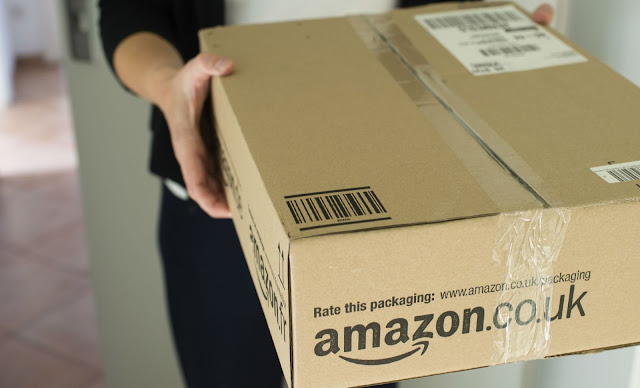Amazon SEO: The Ultimate Guide To Ranking Higher

You've probably heard of SEO if you own an e-commerce store or an affiliate website. It stands for search engine optimization and refers to a variety of techniques for improving a website's or page's search ranks. Also, don't forget about CRO in your quest for a good SEO plan implementation (conversion rate optimization). These two should never compete and should always complement one other.
When we think of SEO, we frequently simply think of Google. And, of course, you want high search engine ranks.
Your website, however, isn't the only place on the internet where you may sell your product. If you have an Amazon product page, you want customers to be able to find it, just as you want your website to appear on the first search engine results page (SERP) for your industry keywords.
It's critical to realise that Amazon's search algorithm is not the same as Google's or Bing's when it comes to exposing results. In a nutshell, there are far fewer ranking signals or elements than with traditional SEO, which comprises as many as 200 criteria, according to some estimates (though others dispute this).
So, how do you go about search-engine-optimizing your listings? This article was written to teach you all you need to know about Amazon SEO, including the finest white hat tactics for improving your rankings.
What is Amazon SEO?
The practice of optimising your product listings for Amazon's ranking algorithm, A9, is known as Amazon SEO. Keywords (or search terms) in the title of a product listing, uploading high-quality images, setting competitive prices, and other optimizations are among them.
The Amazon ranking system is entirely self-contained. It only determines the performance of your product if it is listed on Amazon's website. Amazon's ranking of your website is unaffected by your website or other digital media campaigns.
Amazon's search engine is comparable to Google's in that both rely on keywords, but that's where the similarities end. This is because their objectives are dissimilar:
- Google's purpose is to respond to the searcher's query: most people use Google to look for information or to receive an answer to a question. As a result, Google gives pages a high ranking based on how much people interact with them. People found it useful, as evidenced by the high degree of involvement.
- Amazon's purpose is to sell the things that the searcher is looking for right now: When users search for things on Amazon, they're seeking something to buy, therefore the firm prioritises sites based on their conversion potential.
As we learn more about Amazon SEO, it's vital to keep this distinction in mind.
The Amazon A9 Algorithm
A9, Amazon's algorithm, is designed to display you the product that you are most likely to buy. Furthermore, it displays the product that is most likely to result in a favourable shopping experience. In other words, distinguishing between trusted and untrustworthy sources.
While Amazon's a9 algorithm serves the same goal as those used by other internet search engines (and there are many similarities), certain important features distinguish A9 as a distinct beast in terms of optimization tactics and prospects.
People do many types of searches on search engines such as Google, each motivated by a distinct set of intents. Many Google searches are informative, with the user looking for information or data about something. This sort of search accounts for the vast majority of Google inquiries.
Other Google searches may be navigational, implying that the user is attempting to reach a certain website or area on the internet.
The algorithm decides which items to offer to potential consumers and how high those products can rank depending on several factors such as:
- Keyword or search query relevance
- Customers' previous preferences and behaviour
- The number of previous purchases of a specific product
Amazon SEO: How to Optimize Your Page for Search
So, we've covered the fundamentals of how Amazon's search engine works and what you should keep in mind while building your listing. But how can you make a product page that will show up high in search results?
Here are four things you can do to make your listings more desirable:
1. Keyword Research
Extra keywords can be entered in a separate form on Amazon. These keywords must not appear in the title or description, contrary to typical SEO, or Amazon will ignore them.
Consider using this as an opportunity to add relevant keywords from other verticals. If you sell coffee, you could want to add "tea" or "energy drinks" to attract more clients.
Conduct keyword research, in the same manner, you would if you were looking to improve the content of your website. Make an effort to learn the selling terms and conduct A/B testing to learn how to improve your content for A9.
2. Optimize product listings by incorporating keywords
Once you've identified the keywords you want to rank for, use them throughout your listing to tell Amazon's search engine that you want to be ranked for them.
In your listing, there are three main locations where keywords should be used:
- Product Title: Your primary keyword should be included in the title. If possible, add more keywords, but don't go over 200 characters. Is the product title in a listing up to par with what customers expect? Is it delivering the right amount of data? Major corporations are usually allowed to use the product's model name, while lesser-known brands may be compelled to identify a few features. The product title is the first thing consumers notice in a listing.
- Product Features: The bullets at the top of your listing are your product features. There's a lot you can do here because Amazon gives you a lot of options for writing about your products. If the "product description" contains enormous amounts of information in paragraphs rather than neat, straightforward bullet points outlining every aspect of the product, buyers or consumers would never like it. Try to incorporate your major keyword, as well as a few other phrases that you want to rank for.
- Product Description: Although the product description is not as crucial as the product title or bullet points in terms of ranking, it is still relevant to the purchasing decision. It's important to employ the right keywords here, as well as a strong emphasis on emotional and positive sales reasons.
3. Make the content of your listing descriptive
So, you've identified the keywords you want to use and have included them in your listing. Is there anything else you can do?
As previously said, your conversion rate plays a significant role in Amazon SEO. So, the next step is to make sure your listing's content is engaging and of good quality, so people will want to buy your product.
Here are a few pointers to help you produce killer content for your listings that will help you sell:
- High-Quality Images: The fundamental reason behind this should be obvious: When photos are of good quality, buyers get a greater "feel" for the product, improving the likelihood of a sale.
- Focus on Benefits, Not Features: When outlining your product's features, think about how they help the user. Take a hedge trimmer, for example, if your trimmer is lightweight, you may emphasise how the consumer will be less tired when using it.
- Create an accurate and detailed product description: In this section, you can go into greater depth regarding your product. Expand on the features of your product and all the ways they will benefit the customer. A thorough product description can make a significant difference in your conversion rate. Although product descriptions don't contribute as much to Amazon SEO as other parts, they nevertheless play a significant role in persuading shoppers to purchase a product.
- Use Enhanced Brand Content/A+ Content for Branded Products: These capabilities will allow you to customise the content of your product listings if you're selling branded products. As a result, you'll be able to develop more compelling content, which will lead to increased sales.
4. Manage Your Reviews
When it comes to Amazon SEO, a product's ratings and reviews are other essential components that are evaluated and considered for higher rankings. Simultaneously, they assure that the ranks improve indirectly.
This, in turn, has an impact on conversion rates and click-through rates. The more good reviews a product has, the more valuable it is. Other users and buyers may find the customer reviews beneficial or unhelpful, which is reflected in their assessments.
Like reviews, the yellow stars play a vital part in raising click-through rates. As a result, there are some higher click incentives with a reasonable value and some excellent overall average ratings.
Other Tips and Tricks
As you can see, Amazon SEO is a complicated subject. There are numerous ways to increase your rankings, so it's critical to stay current on all of the latest tactics.
Here are a few more ideas for you to think about:
1. Optimize Your Images
If you don't have the right photographs, it can affect your search rankings and potentially cause your listing to be removed. As a result, adhering to Amazon's image rules is crucial.
Ensure that your photographs have a minimum resolution of 1000 × 1000 pixels and that the product is displayed against a white background. In addition, the product must fill at least 85% of the photograph and be visible.
2. Backend Search Keywords
These search keywords are currently hidden from shoppers, although Amazon's A9 algorithm frequently indexes them. As a result, they can have a significant positive impact on a product's search results.
Keep in mind that you only have 250 characters, so use them wisely. Avoid using terms you’ve already used in your listing to maximise this tool. Also, you don’t need to add any commas or punctuation between each term.
3. Amazon FBA Program
For sellers, the Amazon FBA service is tremendously convenient. It lets you transport your inventory to one of their warehouses, where it will be held until someone purchases one of your products, at which point they will ship it for you.
It can, however, assist you with SEO. Your products will be eligible for Prime shipping if you use the FBA programme. This has been shown to significantly increase sales, which can help you enhance your search rankings.
Allowing Amazon to manage your fulfilment will also help you reduce bad reviews, which will boost your SEO.
4. Have a Full Inventory
If you don't have any inventory, you won't be able to sell anything. And if you aren't making sales, your conversion rate will suffer, lowering your rankings.
Out-of-stock items are also less likely to appear in Amazon's search results. Even if you were listed, you wouldn't be able to sell anything because you don't have anything to sell. Still, it's something to think about. Keep an eye on your inventory and try not to run out.
5. Complete Your Amazon Listing
When you're finishing your listing, there are a lot of different parts to fill out, but it's worth your time to make sure nothing is left blank. Don't skip any of these areas since the Amazon algorithm prefers listings that are 100 per cent complete. Furthermore, the more valuable content you offer in your listing, the more likely you are to persuade them to purchase your goods.
Summing Up
At first glance, Amazon SEO may appear complicated. But, once you understand how it works and how to effectively use it to your advantage, it's not so difficult. Always remember to remain ethical when it comes to SEO. If you try to game the system, Amazon will catch you and punish you.
If you require extra support, do not hesitate to reach out to us. The tools provided by AiHello are designed to assist you in locating and tracking keywords to increase your chances of success.
https://www.aihello.com/resources/blog/amazon-seo-the-ultimate-guide-to-ranking-higher/


